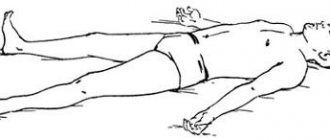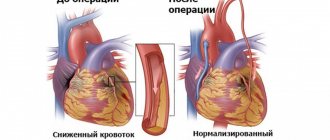Diseases of the cardiovascular system around the world are only increasing every year. This is especially true for hypertension, as the most common pathology of organs associated with blood flow. Constantly high blood pressure occurs in humans for several reasons. Excess weight, bad habits, increased pace of life, emotional distress and regular stress are factors that lead to surges in blood pressure even in middle age. And in people over 65 years of age, hypertension occurs 2-3 times more often.
There are special programs for the treatment of high blood pressure depending on the patient’s age, phase and degree of hypertension (arterial hypertension). But, unfortunately, drug treatment is always associated with a toxic effect on the body. Experienced doctors suggest physical activity as a preventive measure and an effective method of healing. Such activity is most useful and safe in an aquatic environment, that is, in a swimming pool.
The benefits of swimming for hypertensive patients
An important point is the horizontal position of a person while swimming. This makes it easier for the heart to push blood throughout the body. The water in the pool protects you from sudden movements, but at the same time forces you to work in order to stay afloat. Thus, blood circulation becomes more intense and the elasticity of blood vessels returns.
When you regularly swim in the pool, rhythmic movements of your arms and legs make your heart pump more smoothly. The muscles of the “main motor” are strengthened, and the volume of blood expelled per push increases. Doctors clearly recorded a decrease in both indicators of average daily blood pressure in hypertensive patients by 12-16 mmHg with regular swimming in the pool for several weeks.
How about just swimming?
Just swimming in the same pool is also good. “Swimming is a very useful sport, because in the process, not only, for example, legs develop, as when a person just runs. There is a very active workout here, during which the back muscles develop, and the arm muscles are well used. Swimming is becoming a unique type of physical activity, but still, sometimes it’s not always possible to do it,” says Evgeniy Achkasov.
Regular swimming is a good option for strengthening the muscle corset in general. But the main difference between therapeutic swimming and regular swimming is that the former is always performed strictly as prescribed and strictly under the supervision of a specialist, since control and dosing of loads is required.
Losing body weight while swimming
First of all, the aquatic environment reduces the weight of any person. In obese people, most often suffering from hypertension, the musculoskeletal system, especially the joints, is unloaded. Active movement in an elastic water environment helps burn extra calories.
Thus, exercises in the pool are useful due to their versatility for all ages of people suffering from hypertension. If the degree of the disease is not critical and your treating doctor does not mind, visit the pool regularly. The results will not take long to arrive. Swimming products can be purchased in our store.
14 Apr 2021
Swimming and obesity treatment
Treatment of obesity with the energy value of nutrition in the pool
As a result, swimming training takes place in a mode that is gentle on the spine and heart, but quite difficult on the muscles. Water has a massaging and pressing effect on the skin and subcutaneous tissue, the skin is forced to thicken and strengthen. Simultaneously with deep hydration and under the influence of increased blood flow (not only in the muscles, but also in the capillary network of the skin), toxins are washed out of the skin.
When exercising in a pool, water temperature is important. Water removes heat much better than air, and during swimming, energy is spent not only on movement itself, but also on maintaining the usual body temperature
That is, capillary blood flow in the skin increases, it is constantly “warmed up”. But the water cools it again, as a result, hot blood from the internal organs is pumped into the capillaries more and more intensively, stimulating blood flow, and fat reserves begin to be destroyed in order to provide the body with the necessary energy. Adipose tissue itself serves the body as a “thermal insulator”, so if the water is constantly too cold, then the body is forced to retain the “fat layer”. Warm water does not have this effect. Therefore, swimming for the treatment of obesity is preferably in moderately warm or cool water, but in no case cold or hot water. You should not freeze or bask in a warm pool.
Obese people usually float quite well. True, there is an exception - people who have been overweight since childhood have a very dense and heavy skeleton, formed to “carry” a heavy body; they have negative buoyancy, like thin swimmers. The second exception is that if excess weight is caused by swelling of adipose tissue, buoyancy is also low. In these cases, swimming as such is not always available, but water aerobics, as with grade 2-4 obesity, will be very relevant. In addition to the fact that muscular work is performed - in conditions of weightlessness, but with noticeable resistance of water to movement, the resulting currents massage the skin. It tightens, becomes denser, “holds” adipose tissue better, and when losing weight it easily shrinks, which will eliminate the future occurrence of flabby folds of “excess” skin.
Thus, swimming is one of the excellent opportunities not only to speed up the treatment of obesity, but also to achieve a high cosmetic effect and improve the health of the heart and joints. Swimming is very useful for preventing obesity and after recovery.
The beneficial effects of swimming on patients with osteochondrosis of the cervical spine
The beneficial effect of the pool on the patient’s body is explained as follows: the high density of water relieves the spinal column from stress, and the intervertebral muscles work smoothly and naturally.
Exacerbation of osteochondrosis in the cervical spine and swimming
Perhaps the most vulnerable part of the spine is the cervical region. In addition, any chronic disease, as a rule, occurs with alternating remissions and exacerbations, accompanied by severe pain, in which any physical activity, including swimming, is harmful. In case of exacerbation of the disease, medications should be taken until the disease is in remission, and swimming should be postponed.
The effects of swimming on the spine
It has been proven that the effects of regular swimming are extremely positive:
- In water, a person finds himself, as it were, in weightlessness, as a result of which the vertebrae “straighten” and acquire their natural position without any external pressure;
- Blood circulation improves, intervertebral spaces expand, kinks in blood vessels are eliminated;
- Pathological curvatures observed with kyphosis, lordosis, or scoliosis are corrected;
- The muscle frame is strengthened and spasmed muscles are relaxed;
- As a result of physical activity, body weight decreases;
- Well-being and emotional component improve.
So, osteochondrosis not only does not interfere with visiting the pool, but, on the contrary, is a good reason to take up swimming. However, all training in the presence of any disease should only take place after consulting a specialist. In addition, the patient should be familiarized with the basic principles of swimming with osteochondrosis.
What should you pay attention to?
If the patient suffers from osteochondrosis of the cervical spine, or there are other diseases of the spine, but they are in remission, then they should swim on their back. This helps to relax the muscle corset of the neck, straighten the intervertebral space and eliminate existing nerve compression.
It is important to follow the following rules:
- Swim only indoors, as an open, easily blown area can exacerbate the disease;
- Swim only in the presence of an instructor;
- Train regularly - the optimal would be three sessions a week for 45 minutes, half an hour after meals;
- Before swimming you should warm up;
- The following climate regime must be maintained in the pool: water temperature from 26 to 28 °C, respectively, air temperature is 2-3 °C more, humidity should be no more than 90%.
You can also swim breaststroke, but only if you follow the correct technique. The head and neck must be in the water, otherwise muscle spasm may increase and various pain sensations may occur.
Regardless of the chosen type of swimming, breathing should be uniform and rhythmic.
List of contraindications for swimming
There are a number of pathologies in which going to the pool is not advisable. This:
- Any colds or infectious diseases;
- The presence of erosions, ulcers, damage to the skin;
- Problems with blood circulation in the brain;
- Convulsions, respiratory, or cardiovascular failure;
- Injuries.
Features of swimming with osteochondrosis
In order to use muscle groups as much as possible, a change in load is necessary. In this case, the muscles should periodically relax and stretch. Classes should begin with a 10-minute warm-up, which will prepare the muscles for work. Then a load is given on the legs, which is replaced by exercises on the arms. There must be a short rest - two to three minutes will be enough to restore pulse and breathing.
Tangible results from swimming will appear after just a few sessions.
However, the maximum effect can only be achieved with regular visits to the pool. Author: K.M.N., Academician of the Russian Academy of Medical Sciences M.A. Bobyr
Contraindications to swimming pool exercises
Swimming and aerobics in water are the most adequate exercise for patients with hypertension. But you should not forget that high blood pressure is a pathological condition that can lead to serious complications. You need to refuse classes in the following cases:
- During training there is shortness of breath, breathing and pulse take a long time to recover;
- the upper pressure exceeds 220, or the lower one “jumped” above 120, even if your health does not change;
- The first signs of ischemic disorders or atrioventricular block (II and III degree) are diagnosed on the ECG;
- There are frequent hypertensive crises or a progressive course of the disease.
Since pool water contains chlorine, it is undesirable to contact it if you have skin diseases: eczema, atopic dermatitis. People with asthma should approach exercise with caution. In them, chlorinated water can cause an exacerbation of the disease.
Water aerobics for hypertension
Exercising in water has an effective effect on the cardiovascular system.
Aqua aerobic exercises are needed for those hypertensive patients whose body no longer responds to medications for blood pressure, and such people are at least 30%. You need to do gymnastics in the water. Scientists from the University of Sao Paulo conducted an experiment and found that the blood pressure of hypertensive patients drops if the water is heated to 32 degrees. Due to increased temperature and physical activity, blood vessels dilate and blood flow improves. Accordingly, the pressure decreases. It is generally accepted that constant physical activity is the most effective way to reduce high blood pressure. However, overweight people and the elderly find it difficult to tolerate gym sessions. Therefore, aerobics in warm water is exactly what they need.
Swimming is an aerobic workout. It can reduce blood pressure and pump the heart muscles. At the same time, blood is accelerated throughout the body down to small capillaries, saturating the tissues with oxygen. Uniformity of saturation is achieved by normalizing breathing, which becomes even and deep.
Hypertension and sport
Regular training makes a person more disciplined. He begins to carefully monitor the regime and thinks about his diet. It’s hard to argue with the fact that nutrition and proper rest are important for any diagnosis. In addition, when playing sports, psychological tension and stress go away. We can say that all the negativity “splashes out” along with the adrenaline produced. After sports activities, the body continues to synthesize serotonin for several hours - the same pleasure hormone that improves mood.
It is obvious that physical activity with a diagnosis such as hypertension is not only indicated, but also vital. But excessive loads do not bring benefit to the patient, and with high blood pressure they can even cause harm. What kind of sport is best for hypertensive patients? Experts say that with such a diagnosis, training is required, first of all, for the blood vessels and heart, that is, aerobic exercise is preferable to strength exercise.
Physical aerobic exercise for hypertension helps strengthen small and large vessels, reduces peripheral resistance and regulates lipid metabolism. In plain language, cholesterol becomes less, and already formed plaques gradually dissolve. Blood flow is normalized, and the vessels no longer experience high stress. Any doctor will confirm that feasible exercises are beneficial for hypertensive patients, but they must be selected individually, taking into account the therapy being carried out and the stage of the disease.
Obesity and its causes
Obesityphysical activity
Physical inactivity, that is, low mobility, ensures a positive energy balance when more energy comes from food than is expended. Since a negative balance is always a threat to life, and the body, especially accustomed to irregular exercise and unsystematic nutrition, constantly expects stress, the “excess” energy is stored as a reserve in adipose tissue. Therefore, irrational and irregular nutrition, strict diets alternating with periods of “eating” and sudden fitness loads for a week or two are factors that increase the risk, and their elimination is, in fact, the prevention of obesity. Genetic predisposition also increases the risk of obesity.









